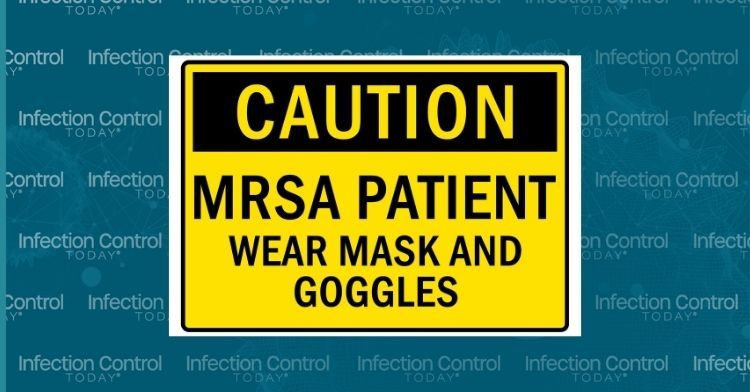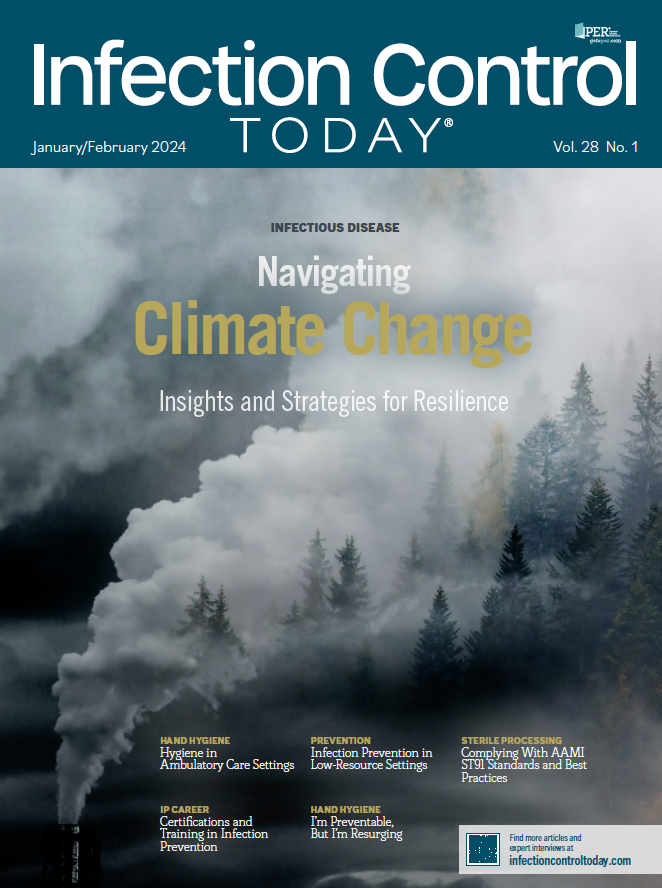Challenging the Universality of Contact Precautions in MRSA Prevention: A Critical Appraisal of Recent Infection Control Guidelines
A critical analysis questions the universal application of contact precautions (CP) for MRSA prevention, considering potential harms, environmental sustainability, and evidence-based alternatives.
Safety equipment sign and labels: A patient with MRSA wears a mask and goggles.
(Adobe Stock 569752761 by Pog)

In a recent study published in the American Journal of Infection Control (AJIC), Daniel J Diekema, MD, Department of Internal Medicine, University of Iowa Carver College of Medicine, Iowa City, Iowa; Department of Medicine, Maine Medical Center, Portland, Maine; and his colleagues, conducted an in-depth analysis of infection prevention recommendations, particularly those related to the prevention of methicillin-resistant Staphylococcus aureus (MRSA) transmission and infection in acute care hospitals. The study, supported by the Society for Healthcare Epidemiology of America (SHEA), the Infectious Diseases Society of America, and the Association of Professionals in Infection Control and endorsed by the American Hospital Association and The Joint Commission, aimed to provide valuable insights into infection prevention strategies.
While infection prevention measures during the COVID-19 pandemic have been widely discussed, this study took a unique approach by including a broad range of health care professionals beyond physicians and nurses. It encompassed respiratory, physical, and speech therapists, food services, environmental services, and clinical dieticians, all of whom faced varying degrees of exposure risk to SARS-CoV-2.
One of the key findings of the study was that health care personnel with the highest risk of SARS-CoV-2 exposure were more likely to report errors in their adherence to infection prevention measures. This revelation underscores the importance of strengthening infection prevention training and strategies to protect health care workers, especially during times of extreme stress such as a pandemic.
The study's authors addressed one specific aspect of infection prevention measures was the use of contact precautions (CP) for all MRSA-colonized or MRSA-infected patients. While this practice has been considered an "essential practice" in many health care facilities, the study raised concerns about its universality and potential unintended consequences.
The authors argued that CP for all MRSA-colonized or MRSA-infected patients lacks robust support from current evidence. Researchers pointed out that there are no controlled trials directly assessing the effectiveness of CP in preventing MRSA transmission. While observational studies provided some insights, they were unable to definitively establish the superiority of CP over other interventions like standard precautions, hand hygiene, and environmental cleaning.
Additionally, the study highlighted that the decline in hospital-onset bloodstream infections from MRSA could not be solely attributed to CP, as there was a global decline in MRSA infections that began around 2005. The relative contribution of CP to the overall reduction remained uncertain.
The study's authors also referenced the successful MRSA prevention initiative within the US Department of Veterans Affairs (VA) health care system, which combined several interventions, including active screening for MRSA, hand hygiene, and CP. While modeling studies suggested a potential reduction in MRSA transmission due to CP, controlled trials examining increased CP use did not demonstrate clear effectiveness.
Considering these findings, the study's authors suggested a more precise, evidence-based approach to the use of contact precautions for MRSA prevention. Instead of universally applying CP, health care facilities could consider a patient- and context-specific approach, reserving CP for specific situations like outbreaks or cases where evidence suggests ongoing transmission despite other preventive measures.
A critical assessment of CP for MRSA prevention is presented in response to recent infection control guidelines. While the guidelines designate CP as an "essential practice" in health care settings, concerns about its universal application are raised.
The study explores potential harms associated with CP, including adverse events, patient satisfaction, anxiety, and complications in hospitals with shared patient rooms. CP's impact on health care personnel morale, known as "PPE fatigue," is discussed, along with the reduced time available for patient care due to prolonged PPE donning and doffing.
Environmental sustainability is another significant consideration. CP relies on single-use plastics like gowns and gloves, contributing to carbon emissions and plastic waste. The study estimates over 1.5 billion gowns and gloves are discarded annually, resulting in substantial environmental costs, including carbon emissions and the release of harmful plastic by-products into the environment.
The authors propose aligning MRSA CP recommendations with health care organizations' efforts to reduce harm, waste, and environmental impact while improving patient safety.

Newsletter
Stay prepared and protected with Infection Control Today's newsletter, delivering essential updates, best practices, and expert insights for infection preventionists.
Reducing Hidden Risks: Why Sharps Injuries Still Go Unreported
July 18th 2025Despite being a well-known occupational hazard, sharps injuries continue to occur in health care facilities and are often underreported, underestimated, and inadequately addressed. A recent interview with sharps safety advocate Amanda Heitman, BSN, RN, CNOR, a perioperative educational consultant, reveals why change is overdue and what new tools and guidance can help.
New Study Explores Oral Vancomycin to Prevent C difficile Recurrence, But Questions Remain
July 17th 2025A new clinical trial explores the use of low-dose oral vancomycin to prevent Clostridioides difficile recurrence in high-risk patients taking antibiotics. While the data suggest a possible benefit, the findings stop short of statistical significance and raise red flags about vancomycin-resistant Enterococcus (VRE), underscoring the delicate balance between prevention and antimicrobial stewardship.
What Lies Beneath: Why Borescopes Are Essential for Verifying Surgical Instrument Cleanliness
July 16th 2025Despite their smooth, polished exteriors, surgical instruments often harbor dangerous contaminants deep inside their lumens. At the HSPA25 and APIC25 conferences, Cori L. Ofstead, MSPH, and her colleagues revealed why borescopes are an indispensable tool for sterile processing teams, offering the only reliable way to verify internal cleanliness and improve sterile processing effectiveness to prevent patient harm.
The Next Frontier in Infection Control: AI-Driven Operating Rooms
Published: July 15th 2025 | Updated: July 15th 2025Discover how AI-powered sensors, smart surveillance, and advanced analytics are revolutionizing infection prevention in the OR. Herman DeBoard, PhD, discusses how these technologies safeguard sterile fields, reduce SSIs, and help hospitals balance operational efficiency with patient safety.
Targeting Uncertainty: Why Pregnancy May Be the Best Time to Build Vaccine Confidence
July 15th 2025New national survey data reveal high uncertainty among pregnant individuals—especially first-time parents—about vaccinating their future children, underscoring the value of proactive engagement to strengthen infection prevention.